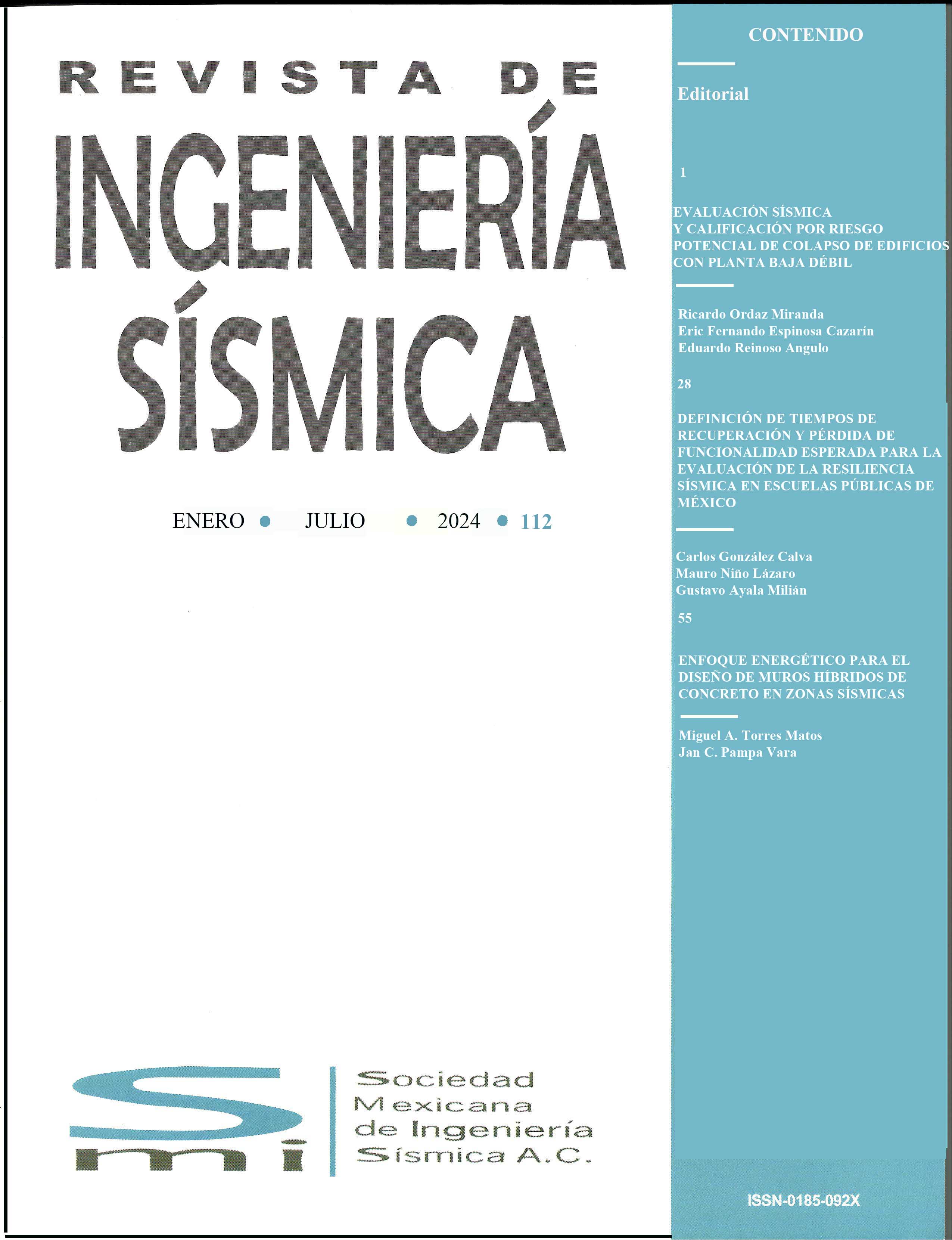DEMANDAS DE ENERGÍA HISTERÉTICA EN OSCILADORES ELASTOPLÁSTICOS SUJETOS A RUIDO BLANCO GAUSSIANO
DOI:
https://doi.org/10.18867/ris.74.74Resumen
Se presenta una solución teórica para estimar la energía histerética por unidad de masa disipada por un oscilador elastoplástico sujeto a una familia de ruidos blancos gaussianos. La solución fue obtenida con base en el modelo propuesto originalmente por Karnopp y Scharton. Con el método
que se propone, los resultados sólo dependen del periodo y de la resistencia del oscilador, del nivel de amortiguamiento y de la densidad espectral de potencia de la familia de ruidos blancos. Las expresiones propuestas son de carácter más general que las expresiones de Karnopp y Scharton y, a diferencia de estas últimas, son aplicables a sistemas con propiedades comúnmente utilizadas en ingeniería sísmica.
Descargas
Citas
Arroyo, D. y Terán, A. (2002), “Strength reductions factors to account for low cycle fatigue”, Seventh US Conference on Earthquake Engineering, Boston, USA, CD.
Cooper G. R. y McGillem C. D. (1999), “Probabilistic methods of signal and systems analysis”, Tercera edición, Oxford University Press.
Cosenza, E. y Manfredi, G. (1996), “Seismic design based on low cycle fatigue criteria”, Memorias, XI Congreso Mundial de Ingeniería Sísmica, Acapulco, México, CD.
Fajfar, P. (1992), “Equivalent ductility factors taking into account low-cycle fatigue”, Earthquake Engineering and Structural Dynamics, Vol. 21, pp. 837-848.
Fajfar, P y Vidic, T. (1994), “Consistent inelastic design spectra: hysteretic and input energy”, Earthquake Engineering and Structural Dynamics, Vol. 23, pp. 523-537.
Iemura H. (1980) “Earthquake failure criteria of deteriorating hysteretic structures”, VII World Conference on Earthquake engineering, Vol. 5, pp 81-88.
Karnopp, D. y Scharton, T. (1966), “Plastic deformation in random vibration”, Journal of the acoustical society of America, Vol. 39, No. 6, pp 1154-1161.
Manfredi G. (2001), “Evaluation of seismic energy demand”. Earthquake engineering and structural dynamics, Vol. 30, pp 485-499.
Mehanny, S. S. y Deierlein, G. G. (2000), “Modeling of assessment of seismic performance of seismic of composite frames with reinforced concrete columns and steel beams”, Reporte No.
, The John A. Blume Earthquake Engineering Center, Universidad de Stanford.
Roberts, J. B. (1968), “An approach to the first-passage problem in random vibration”, Journal of Sound and Vibration, Vol. 8, No. 2, pp 301-328.
Park, Y. J. y Ang A. H. (1985), “Mechanistic seismic damage model for reinforced concrete”, ASCE Journal of Structural Engineering, Vol. 111, No. 4, pp. 722-739
Trifunac, M. D. y Brady, A. G. (1975). “A study on the duration of strong earthquake ground motion”, Bulletin of the Seimological Society of America, Vol. 65, No. 3, pp. 581-626.
Terán, A. (1996), “Performance-based earthquake-resistant design of framed buildings using energy concepts”, Tesis de Doctorado, Universidad de California, Berkeley
Terán, A. y Jirsa, J. O. (2003), “Un modelo simple para predecir la ocurrencia de fatiga de bajo número de ciclos”, Memorias, XIV Congreso Nacional de Ingeniería Sísmica, León, México, CDROM.
Vanmarcke, E. H. y Lai, S. P. (1979), “Prediction of inelastic
response spectra using random vibration”, Proceedings of Engineering Mechanics, pp. 64-68.
Waterloo Maple Inc, (2002), “Maple 8.00”
Williams, M. S. y Sexsmith, R. G. (1995), “Seismic damage indices for concrete structures: a state of the art review”, Earthquake Spectra, Vol. 11, No. 2, pp. 319-349.






